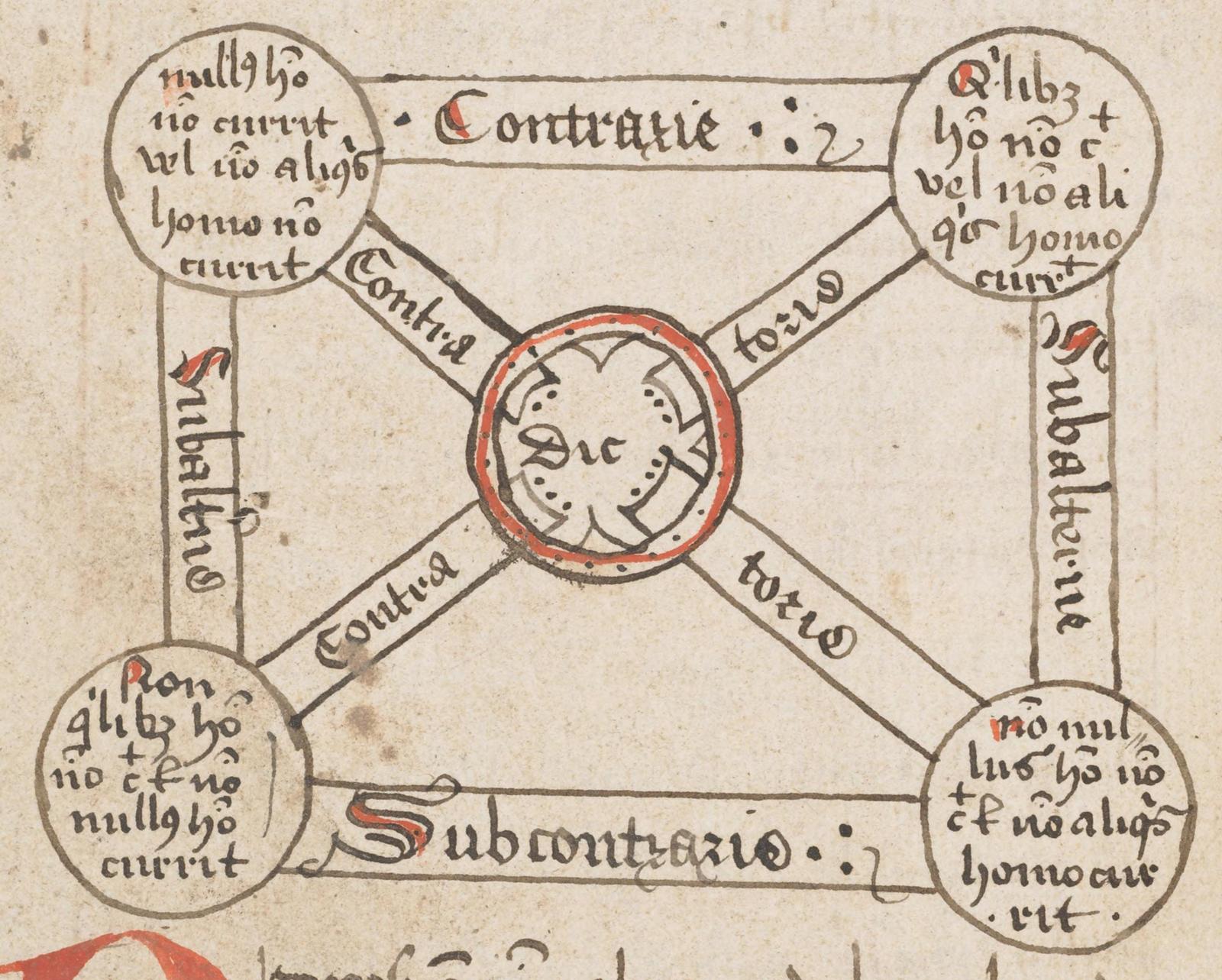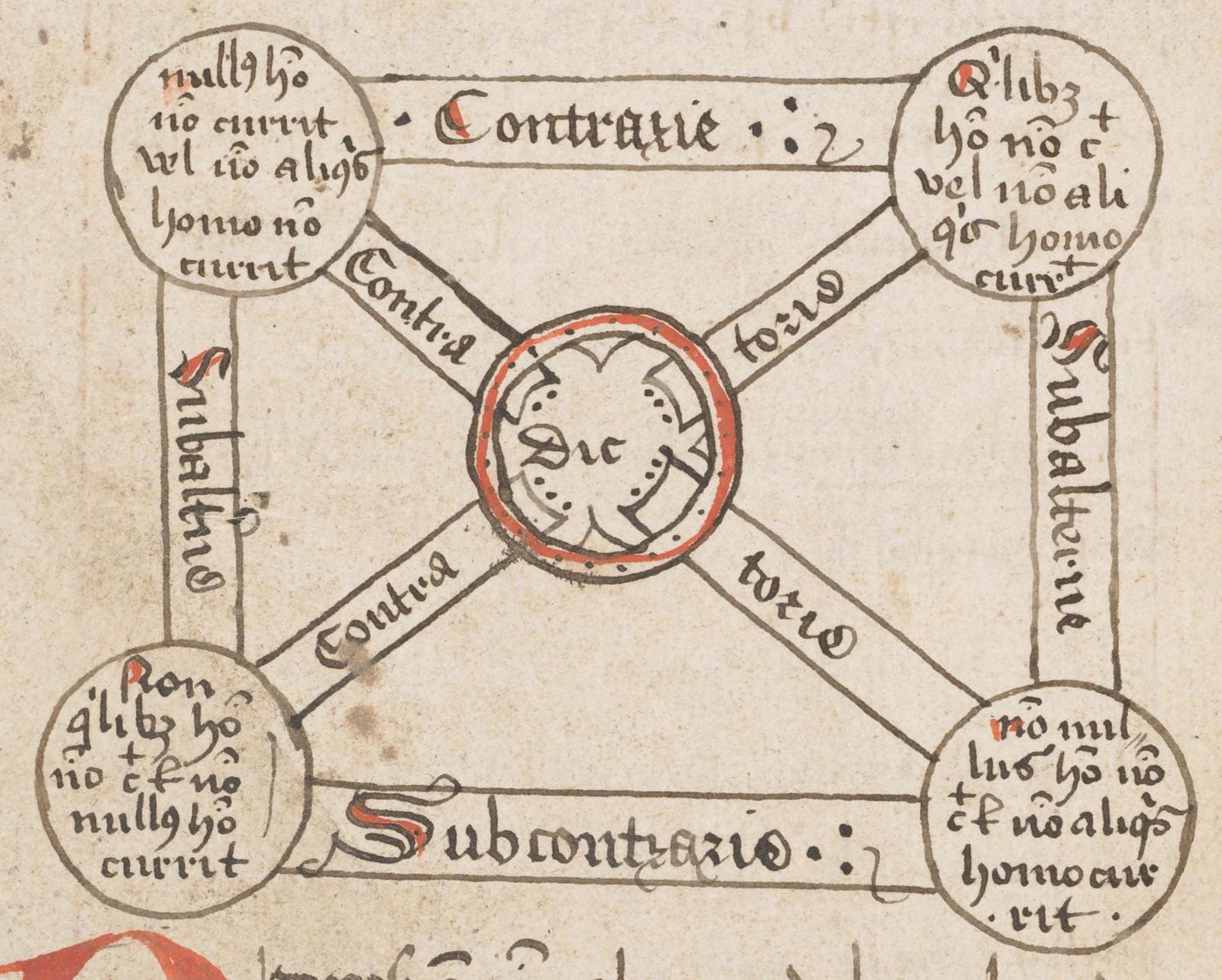
Summule - De consequentia - De suppositionibus - De resolubilibus (1475–1500), fol. 6v
anonymous

Copyright according to our policy
- Aristotelian family
- Classical Sigma-2
- Boolean complexity
- 3
- Number of labels per vertex (at most)
- 2
- Equivalence between (some) labels of the same vertex
- Yes
- Analogy between (some) labels of the same vertex
- No
- Uniqueness of the vertices up to logical equivalence
- Yes
- Errors in the diagram
- Yes
- Shape
- Rectangle (irregular)
- Colinearity range
- 0
- Coplanarity range
- 0
- Cospatiality range
- 0
- Representation of contradiction
- By central symmetry
Logic
Geometry
- Conceptual info
- No
- Mnemonic support (AEIO, purpurea ...)
- No
- Form
- circular
- Label type
- linguistic
- Language
- Latin
- Lexical field
- syllogistics
- Contains partial sentences or single words
- No
- Contains abbreviations
- Yes
- Contains definitions of relations
- No
- Form
- bands
- Has arrowheads
- No
- Overlap
- Yes
- Curved
- No
- Hooked
- No
- As wide as vertices
- No
- Contains text
- Yes
- Label type
- linguistic
- Language
- Latin
- Contains partial sentences or single words
- Yes
- Contain abbreviations
- Yes
Vertex description
Edge description
- Diagram is colored
- Yes
- Diagram is embellished
- Yes
Style
Additional notes
- This diagram contains, strangely, not a single 'primitively lexicalized' quantifier:
- the A-vertex contains "nullus non" and "non aliquis non", but not "omnis"
- the E-vertex contains "quilibet non" and "non aliquis", but not "nullus"
- the I-vertex contains "non quilibet non" and "non nullus", but not "aliquis"
The O-vertex is not primitively lexicalized anyway; in this particular diagram it contains "non nullus non" and the erroneous "non aliquis" (the latter should be either "aliquis non" or "non omnis").